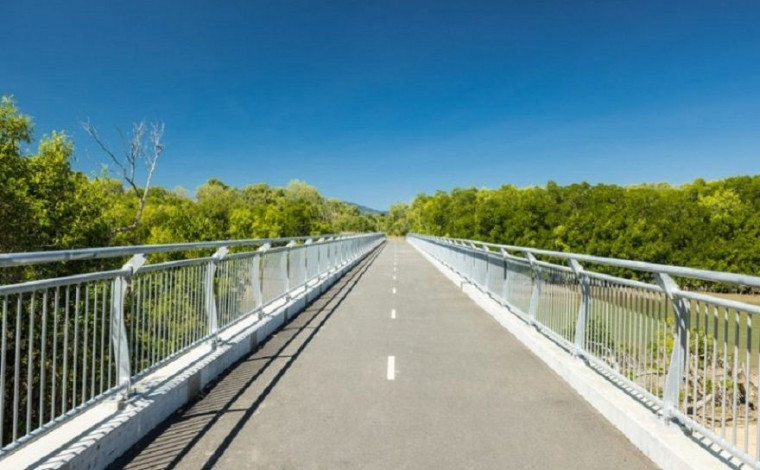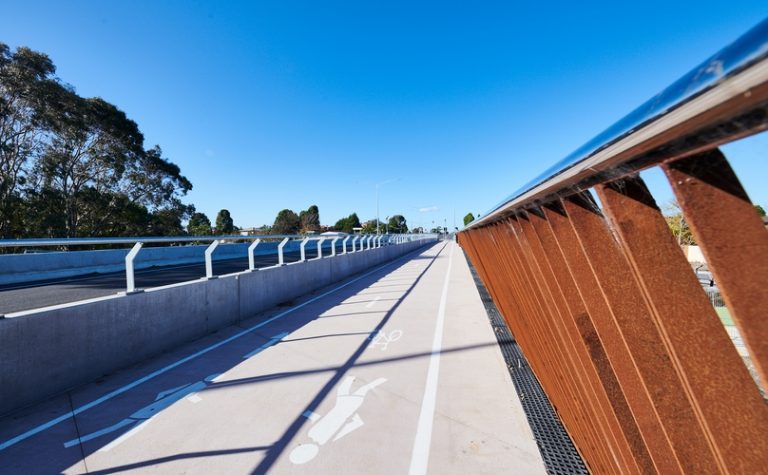-
New Zealand
Copyright © 2025 Powered by BCI Media Group Pty Ltd
Confirm Submission
Are you sure want to adding all Products to your Library?
Contact Detail
21 Feb 2024 by Moddex

The need for safety and fall prevention are just two of the unique challenges that designers and specifiers must address when creating bridges and overpasses. Multiple safety concerns need to be addressed on bridge structures, including the need to protect pedestrians and cyclists, preventing falls and objects from being thrown or dropped over the edge of the bridge, and providing safe maintenance access.
Due to these factors, safety barriers are required for bridge structures, with some also needing anti-throw screens. All bridge barrier types must be compliant with AS/NZS 5100 for bridge design, as well as other guidelines depending on the project, including the New Zealand Transport Agency Bridge Manual (NZTA Bridge Manual) or the Austroads Guide to Road Design.
Pedestrian and Cyclist Barriers: AS/NZS 5100
Geometric requirements
AS/NZS 5100.1:2017 “Bridge design – Scope and general principles” sets out requirements for the design of new bridges and other structures and provides guidance on the assessment of existing bridges and modification to existing bridges. It provides that pedestrian barriers are mandatory on bridges and other structures that accommodate pedestrian and cyclist paths.
Clause 16.2.2 sets out geometric requirements for barriers on the outside edge of pedestrian or cyclist paths, Clause 16.2.3 covers barriers between a pedestrian and/or cyclist path and a carriageway.
For pedestrian protection barriers for bridges over electrified rail, which is covered by Clause 16.3, their design and extent will be determined by the relevant rail authority. Sight distances and positioning, particularly on curves or close to intersections, must be taken into account when installing high barriers.

Transport authority guidance
With any bridge project, the design guidelines of the “relevant authority”, usually the owner of the bridge, road or railroad corridor it crosses, should be consulted. Typically, this means bridge designers and specifiers will need to be aware of the barrier requirements in Austroads Guide to Road Design and the NZTA Bridge Manual.
Part 6A and 6B of the Austroads Guide to Road Design contains the relevant pedestrian barrier requirements. Additionally, the Austroads Guidelines for Standardised Bridge Barrier Designs offers some background into the work to create a consistent framework in relation to the design of traffic barriers for bridges.
Bridge Access Platforms: AS 1657
Bridge access platforms allow personnel to access parts of bridge for inspection, maintenance and repair work. To ensure such platforms are safe and protect workers from falls from heights, AS 1657:2018 “Fixed platforms, walkways, stairways and ladders – Design, construction and installation” should be followed. A key aspect of this Standard are the requirements for guardrail and handrails, including heights, rail and staunchion sizing for aluminium and steel, spacings of upright staunchions and the spacing between top rails and mid rails.
Moddex is here to help
Moddex are Australasia’s leading manufacturer of modular, no-weld barrier systems. Moddex eliminates design and engineering costs, reduces installation costs, and minimises onsite fabrication issues with their smart modular handrail, balustrade and barrier systems. Supplied as a series of components with simple assembly instructions, every Moddex system can be adapted or extended with additional components or cut to size on site.
Moddex have put together a guide discussing Australia and New Zealand’s Barrier requirements for bridge structures & access platforms, providing you with that latest information to ensure you’re staying compliant.
Download the full guide by clicking the link below.



